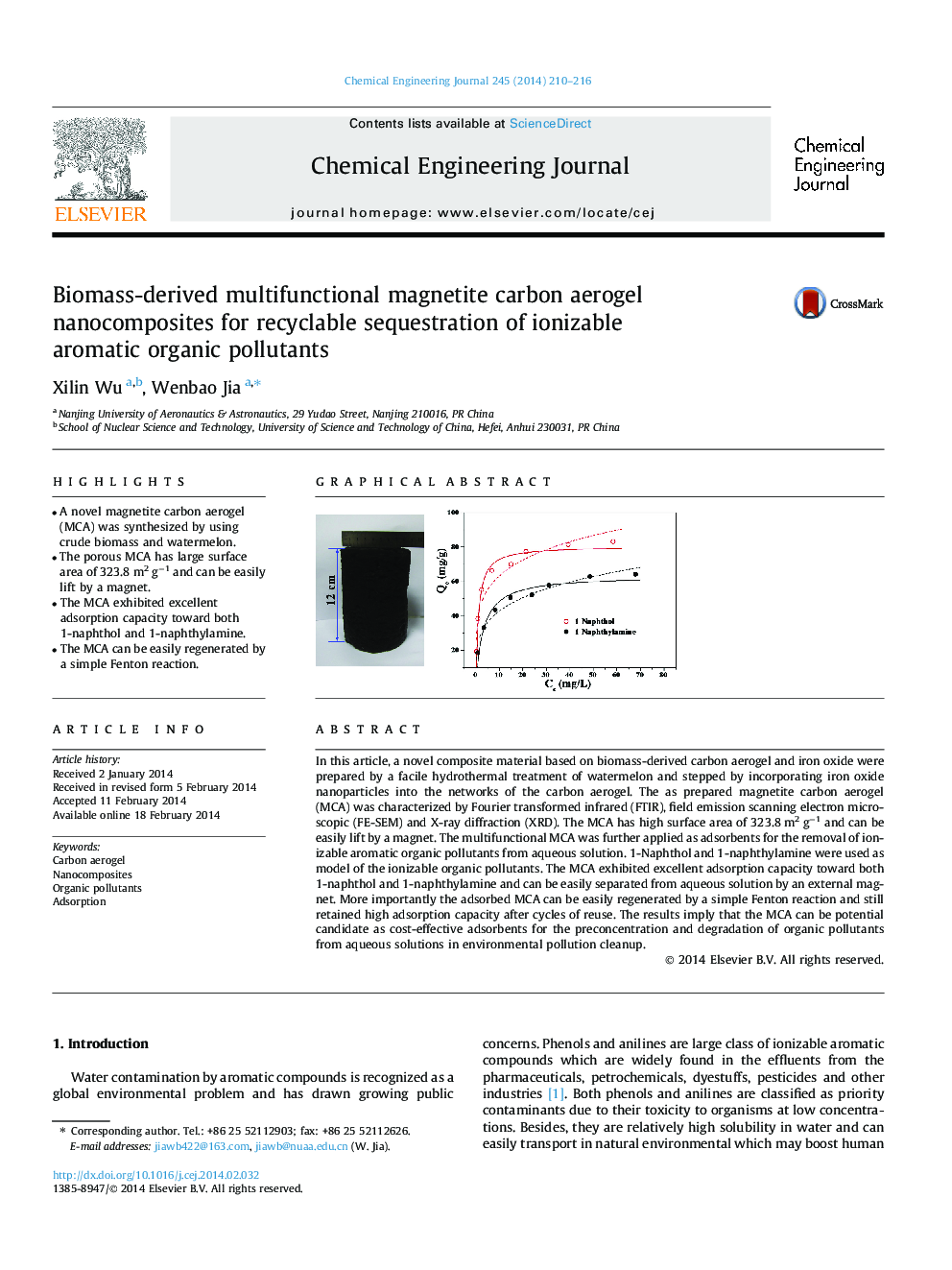| Article ID | Journal | Published Year | Pages | File Type |
|---|---|---|---|---|
| 147452 | Chemical Engineering Journal | 2014 | 7 Pages |
•A novel magnetite carbon aerogel (MCA) was synthesized by using crude biomass and watermelon.•The porous MCA has large surface area of 323.8 m2 g−1 and can be easily lift by a magnet.•The MCA exhibited excellent adsorption capacity toward both 1-naphthol and 1-naphthylamine.•The MCA can be easily regenerated by a simple Fenton reaction.
In this article, a novel composite material based on biomass-derived carbon aerogel and iron oxide were prepared by a facile hydrothermal treatment of watermelon and stepped by incorporating iron oxide nanoparticles into the networks of the carbon aerogel. The as prepared magnetite carbon aerogel (MCA) was characterized by Fourier transformed infrared (FTIR), field emission scanning electron microscopic (FE-SEM) and X-ray diffraction (XRD). The MCA has high surface area of 323.8 m2 g−1 and can be easily lift by a magnet. The multifunctional MCA was further applied as adsorbents for the removal of ionizable aromatic organic pollutants from aqueous solution. 1-Naphthol and 1-naphthylamine were used as model of the ionizable organic pollutants. The MCA exhibited excellent adsorption capacity toward both 1-naphthol and 1-naphthylamine and can be easily separated from aqueous solution by an external magnet. More importantly the adsorbed MCA can be easily regenerated by a simple Fenton reaction and still retained high adsorption capacity after cycles of reuse. The results imply that the MCA can be potential candidate as cost-effective adsorbents for the preconcentration and degradation of organic pollutants from aqueous solutions in environmental pollution cleanup.
Graphical abstractFigure optionsDownload full-size imageDownload as PowerPoint slide
